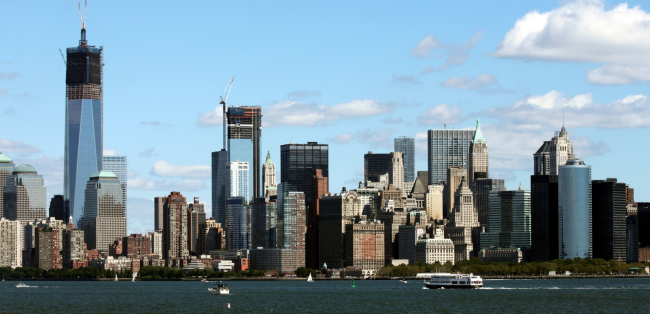A rezoning plan could bring new office towers to Midtown East, but some are worried about the neighborhood's landmarks
The Department of City Planning has released a proposal for the rezoning of Midtown East, Crains New York reports, which could bring more office towers to the area bordered by East 57th Street to the north and East 39th to the south, and Fifth Avenue to the west and Second Avenue to the east.
The plan points out the potential of the area, noting that it will soon be served by additional transit options, thanks to the Second Avenue subway and East Side Access, which will bring LIRR riders to Grand Central. It also notes the neighborhood’s “aging office stock” and lack of new development, and proposes an increase in the maximum permitted density to allow the construction of new buildings that will better suit today’s workforce. (The plan cites the need for properties that allow flexible office layouts and open plans, amenities that much of the current office stock does not provide.)
One unusual aspect of the proposal has to do with the area’s historic buildings: “East Midtown’s landmarked properties hold considerable reserves of unused development rights,” the plan reads, noting the thousands of square feet of unused rights held by famous sites like St. Patrick’s Cathedral and Grand Central Terminal. The zoning resolution would permit such landmarks to sell their air rights to not only adjacent properties, but also to buildings in other parts of the district.
Furthermore, Curbed reports that 12 buildings in the area are under consideration for landmark status by the Landmarks Preservation Commission—including the Graybar Building, the Pershing Square Building, and the Yale Club—meaning they would be protected from development if the rezoning plan goes forward. And as this Wall Street Journal article explains, the future office towers that purchase the landmarked buildings’ air rights—which could be worth hundreds of millions—would be able to build up to 20 percent higher than they otherwise would have.
Andrea Goldwyn, director of public policy at the New York Landmarks Conservancy, says she’s pleased that landmarks are playing a much larger role in this rezoning plan than they did in a previous one, which was helmed by Mayor Bloomberg in 2013 and shot down by the City Council. “Conserving older buildings is what makes New York unique,” Goldwyn says. “We think it’s great that the ability for landmarks to transfer their air rights will be expanded, as they can use the funds for façade restoration and maintenance.”
While selling air rights does mean increased revenue for the city’s historic properties, it can also mean development of properties that could dwarf those same landmarks. Consider Enclave at the Cathedral, a 15-story rental tower that was erected beside the Cathedral Church of St. John the Divine.
Per the New York Times, some critique the way the building blocks the northern façade of the cathedral and creates a jarring contrast of architectural styles. (A representative from the church, however, said that more important than aesthetics was the money earned from the rental’s construction, which will help offset maintenance costs.)
And though the rezoning plan will benefit some landmarks, Simeon Bankoff, executive director of the Historic Districts Council, says he sees a potential increase in neighborhood density as cause for concern. “The plan itself posits that should there be a full build, it will double the working population of East Midtown. That’s a lot of people, regardless of how much transit and public space enhancement you’re going to get,” he says. “That’s a broader urban issue. Have we hit too dense?”
Plus, the 12 buildings slated to be landmarked were culled from a previous, longer list of 33 potential landmarks, Bankoff adds. “We greatly support the LPC in protecting those buildings, but it’s a huge question mark that that’s all they could find,” he says.
Andrew Berman, executive director of the Greenwich Village Society for Historic Preservation, acknowledges the need for East Midtown to continue thriving as a business center, but says he also understands why many New Yorkers respond with trepidation to any city announcement of major rezoning plans.
“This administration seems to have trouble recognizing that need for balance and those limits, and all too often sees upzonings as the one and only way to address our city's needs and challenges,” Berman says. “There is also often a failure to recognize the incredible economic and quality of life benefits of preserving our historic landmarks and a more humanly scaled city.”
Crains notes that the city is predicting the rezoning will lead to the construction of at least 16 new towers. Already slated to go up is One Vanderbilt, a mixed-use supertall; Andrea Goldwyn says some are worried that the property will block view corridors. “There is a concern that some of these buildings could create a relationship with neighboring historic buildings that isn’t harmonious,” she says.
New Yorkers who want to weigh in on the rezoning can attend a September 22 public meeting, where the city plan will be reviewed.
You Might Also Like




























